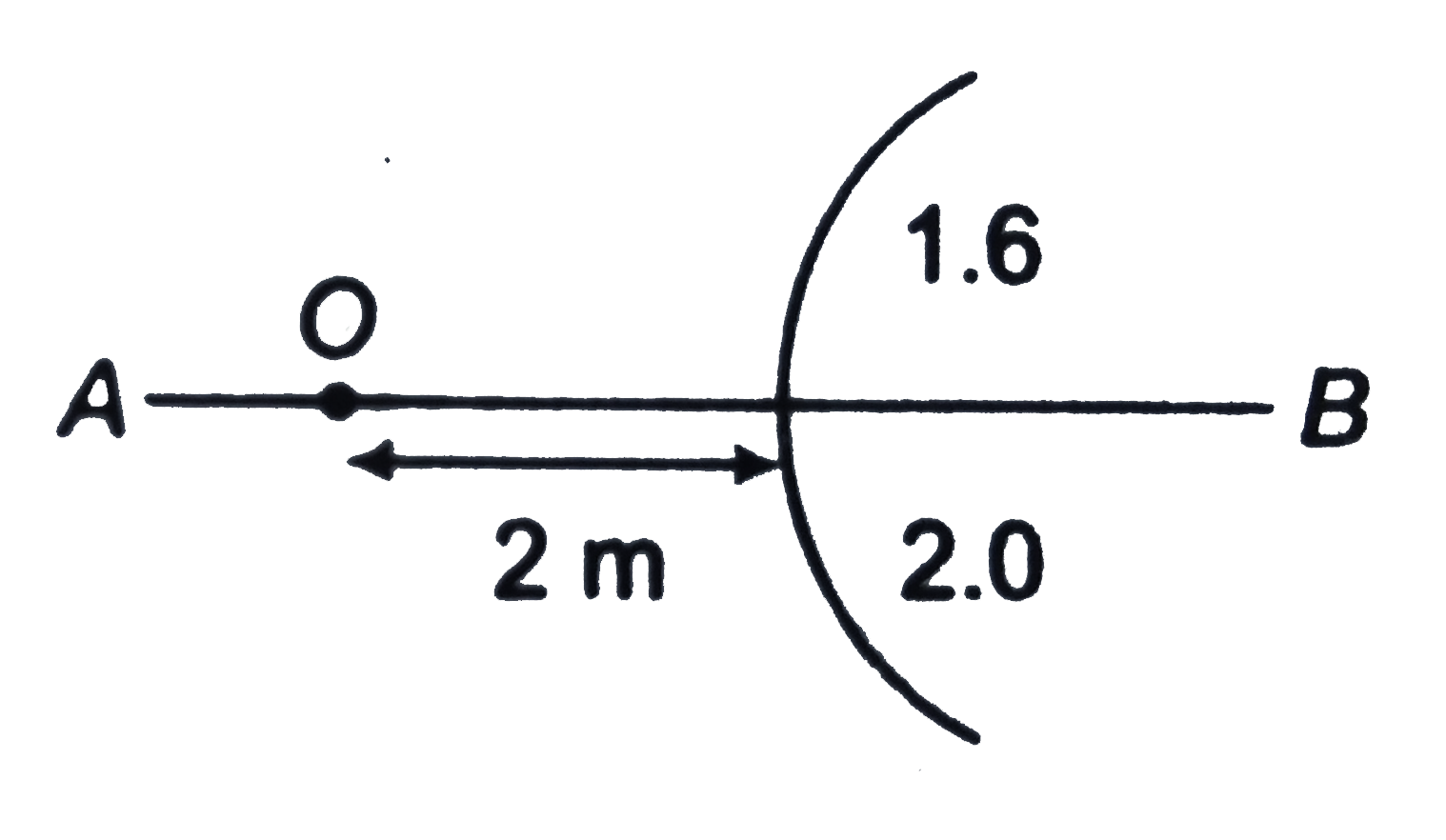An object is placed 10cm away form a glass piecwe (n=1.5) of length 20cm bounded by spherical surfaces of radii of curvaure 10cm. Find the position of final image formed after two refractions at the spherical surfaces.

The correct Answer is:50 cm
Step by step video, text & image solution for An object is placed 10cm away form a glass piecwe (n = 1.5) of length 20cm bounded by spherical surfaces of radii of curvaure 10cm. Find the position of final image formed after two refractions at the spherical surfaces. by Physics experts to help you in doubts & scoring excellent marks in Class 12 exams.
Updated on:21/07/2023Topper's Solved these Questions
- GEOMETRICAL OPTICSBOOK - MOTIONCHAPTER - GEOMETRICAL OPTICSEXERCISE - Exercise - 3 | Level-I (Section K - Lens Maker formula and Magnification, Image formation by convex and concave lens, Combination of lens, Cutting of lens)
5 Videos
- GEOMETRICAL OPTICSBOOK - MOTIONCHAPTER - GEOMETRICAL OPTICSEXERCISE - Exercise - 3 | Level-I (Section L - Power of lens and Mirror, Silverging of lens, Displacement Method)
9 Videos
- GEOMETRICAL OPTICSBOOK - MOTIONCHAPTER - GEOMETRICAL OPTICSEXERCISE - Exercise - 3 | Level-I (Section I - Dispersion of Light)
4 Videos
- FLUIDBOOK - MOTIONCHAPTER - FLUIDEXERCISE - Exercise-4 level-II
5 Videos
- GRAVITATIONBOOK - MOTIONCHAPTER - GRAVITATIONEXERCISE - Exercise - 4 Section - B Previous Years Problems
15 Videos
Similar Questions
An extended object of size 2cm is placed at a distance of 10cm in air (n=1) form pole, on the other side of refracting surface has refractive index n=2. Find the positon, nature and size of image formed after single refraction through the curved surface.

View SolutionAn object is placed 50cm from the surface of a glass sphere of radius 10cm along the diameter. Where will the final image be formed after refraction at both the surfaces ? μ of glass =1.5.
View Solution
Knowledge Check
In the figure, a point object O is placed in air. A spherical boundry separates two media of radius of curvature 1.0m. AB is principal axis. The separation between the images formed due to refraction at spherical surface is
 A12mB20mC14mD10m
A12mB20mC14mD10mAn object is placed at a distance of 10 cm (in a medium of μ = 1) from the pole of a spherical refracting surface bounding a medium of μ = 1.5. If the image formed is virtual and at a distance of 40 cm, then the spherical surface is –
Aconcave with radius of curvature = 8 cmBconvex with radius of curvature = 8 cmCconcave with radius of curvature = 3.6 cmDconvex with radius of curvature = 3.6 cmAn object is placed at 20 cm from a convex mirror of focal length 10 cm. The image formed by the mirror is
AReal and at 20cm from the mirrorBVirtual and at 20 cm from the mirrorCVirtual and at 20/3cm from the mirrorDReal and at 20/3 cm from the mirror
A small object of height 0.5 cm is placed in front of a convex surface of glass (μ−1.5) of radius of curvature 10cm. Find the height of the image formed in glass.

View SolutionA small point objects is placed in air at a distance of 60cm from a convex spherical refractive surface of μ=1.5. If radius of curvature of spherical surface is 25m, calculate the position of the image and the power of the refracting surface.
View SolutionAn object is placed in front of a concave mirror. It is observed that a virtual image is formed. Draw the ray diagram to show the image formation and hence derive the morror equation 1f=1u+1v.
(b) An object is placed 30 cm is front of a plano-convex lens with its spherical surface of radius of curvature 20cm. If the refractive index of the material of the lens 1.5, find the position and nature of the image formed.
View SolutionAn object is at a distance of d=2.5cm from the surface of a glass sphere with a radius R=10cm. Find the position of the final image produced by the sphere. The refractive index of glass is μ1.5.
View SolutionIn the figure shown , a point object O is placed in air on the principal axis. The radius of curvature of the spherical surfaces is 60cm. I is the final image formed after all reflections and refractions.

View Solution
